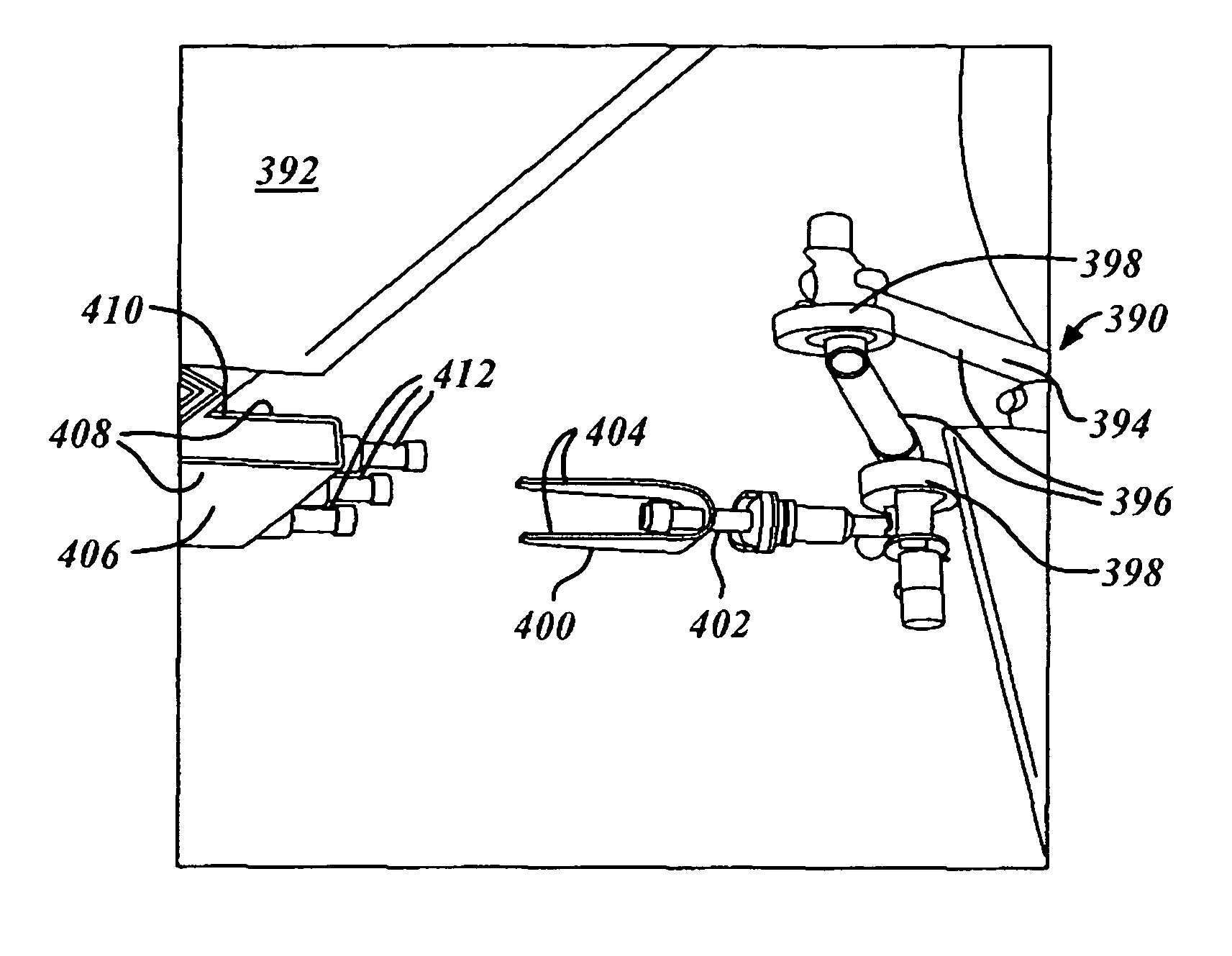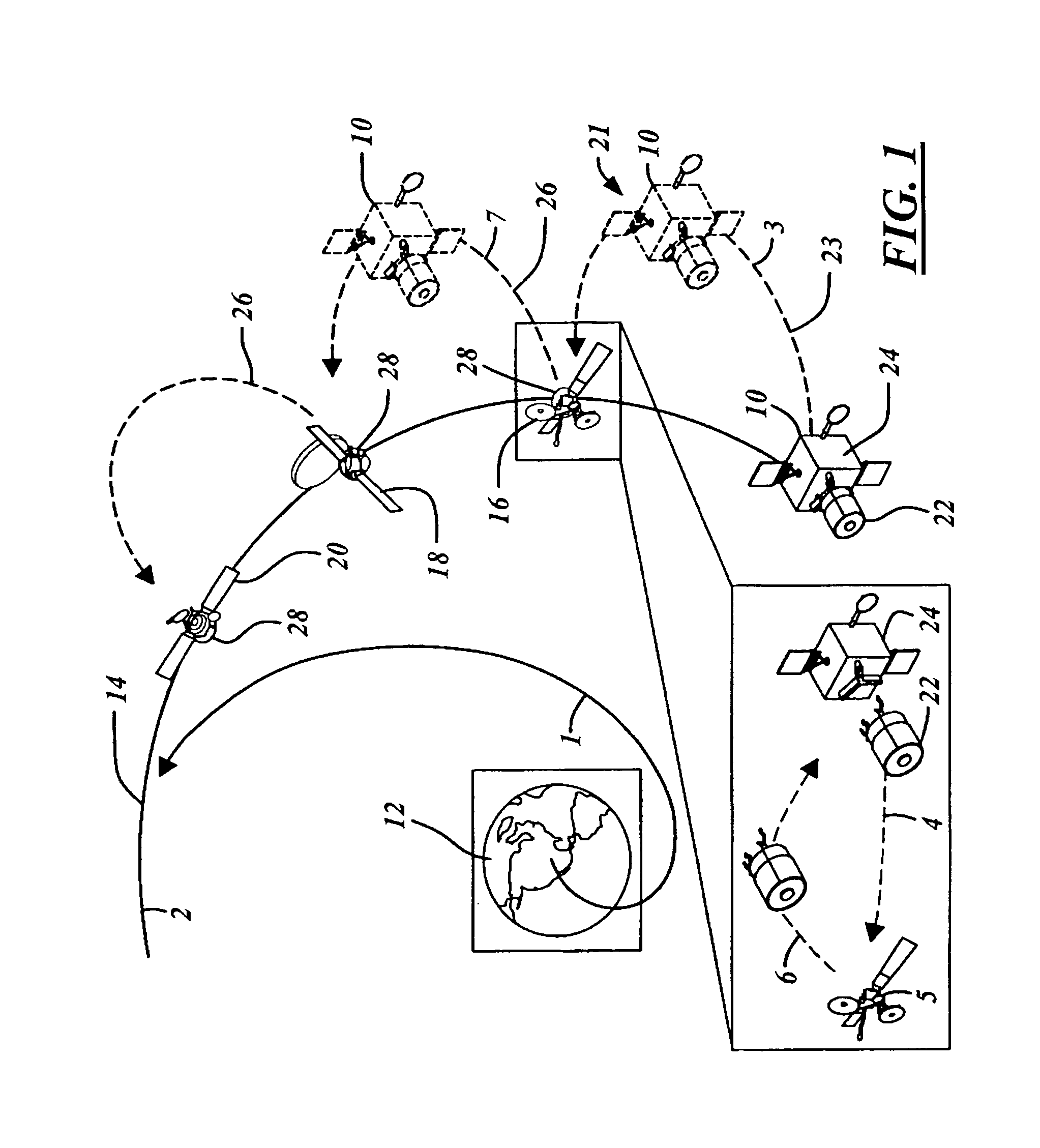Two part spacecraft servicing vehicle system with adaptors, tools, and attachment mechanisms
a technology of spacecraft and adaptors, applied in the field of spacecraft and in-space servicing thereof, can solve the problems of limited control and adjustment of attitude of extension spacecraft, limited spacecraft concept to one satellite, and inability to facilitate servicing, docking or coupling, etc., to minimize the requirement for a realignment procedure, reliable in-space connection, and minimize disturbance of client spacecraft
- Summary
- Abstract
- Description
- Claims
- Application Information
AI Technical Summary
Benefits of technology
Problems solved by technology
Method used
Image
Examples
Embodiment Construction
[0035]In each of the following Figures, the same reference numerals are used to refer to the same components. The present invention may be applied to various in-space servicing applications. The present invention may be used to service non-cooperative, cooperative, spin-stabilized, and body stabilized spacecraft, as well as other spacecraft known in the art. The present invention may also be used to perform various servicing tasks.
[0036]In the following description, various operating parameters and components are described for one constructed embodiment. These specific parameters and components are included as examples and are not meant to be limiting.
[0037]In the following description the terms “servicing” and “servicing tasks” may refer to any task performed by a spacecraft to clean, adjust, replace, repair, update, salvage, recommission, decommission, reposition, reorient, or align another spacecraft or components or systems thereof or to perform some other task on another spacec...
PUM
 Login to View More
Login to View More Abstract
Description
Claims
Application Information
 Login to View More
Login to View More - R&D
- Intellectual Property
- Life Sciences
- Materials
- Tech Scout
- Unparalleled Data Quality
- Higher Quality Content
- 60% Fewer Hallucinations
Browse by: Latest US Patents, China's latest patents, Technical Efficacy Thesaurus, Application Domain, Technology Topic, Popular Technical Reports.
© 2025 PatSnap. All rights reserved.Legal|Privacy policy|Modern Slavery Act Transparency Statement|Sitemap|About US| Contact US: help@patsnap.com



